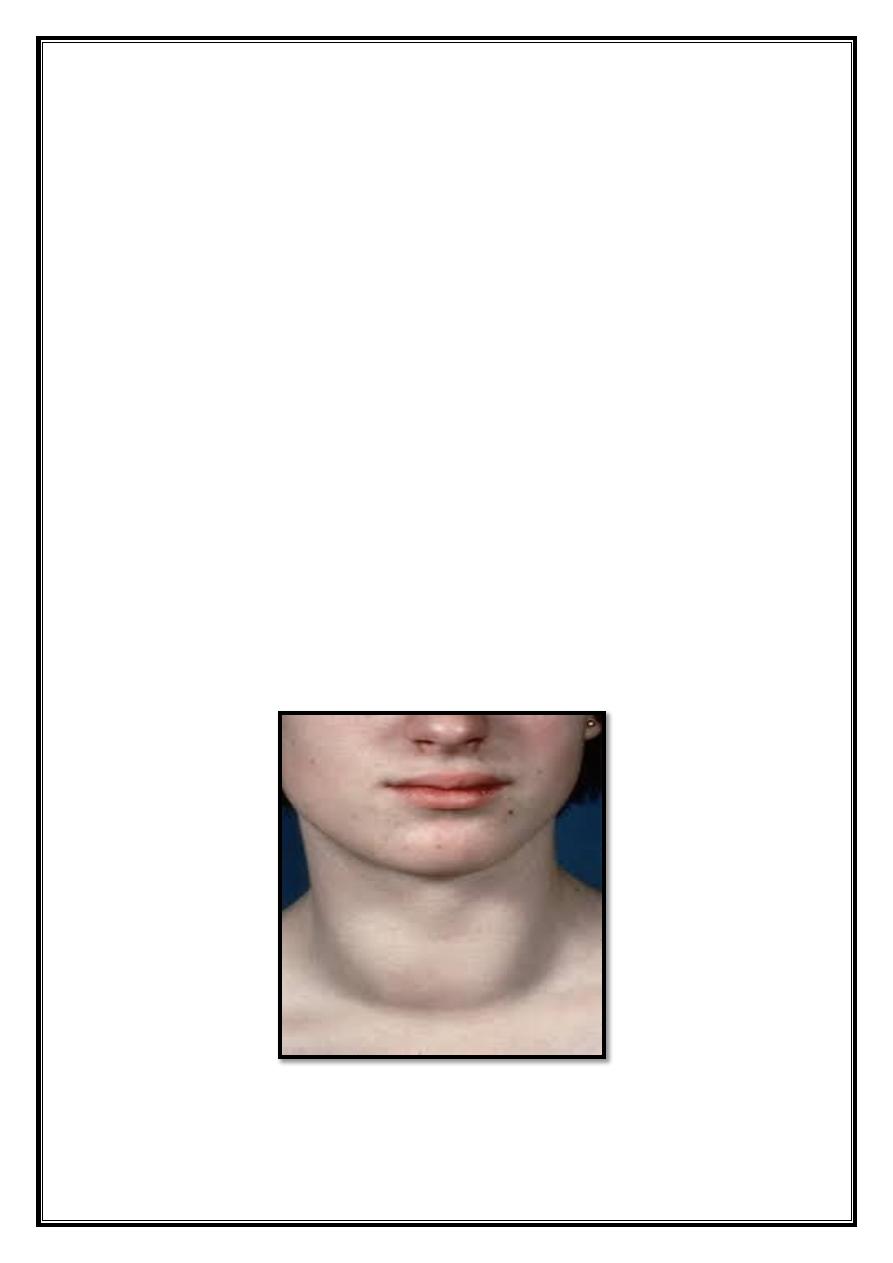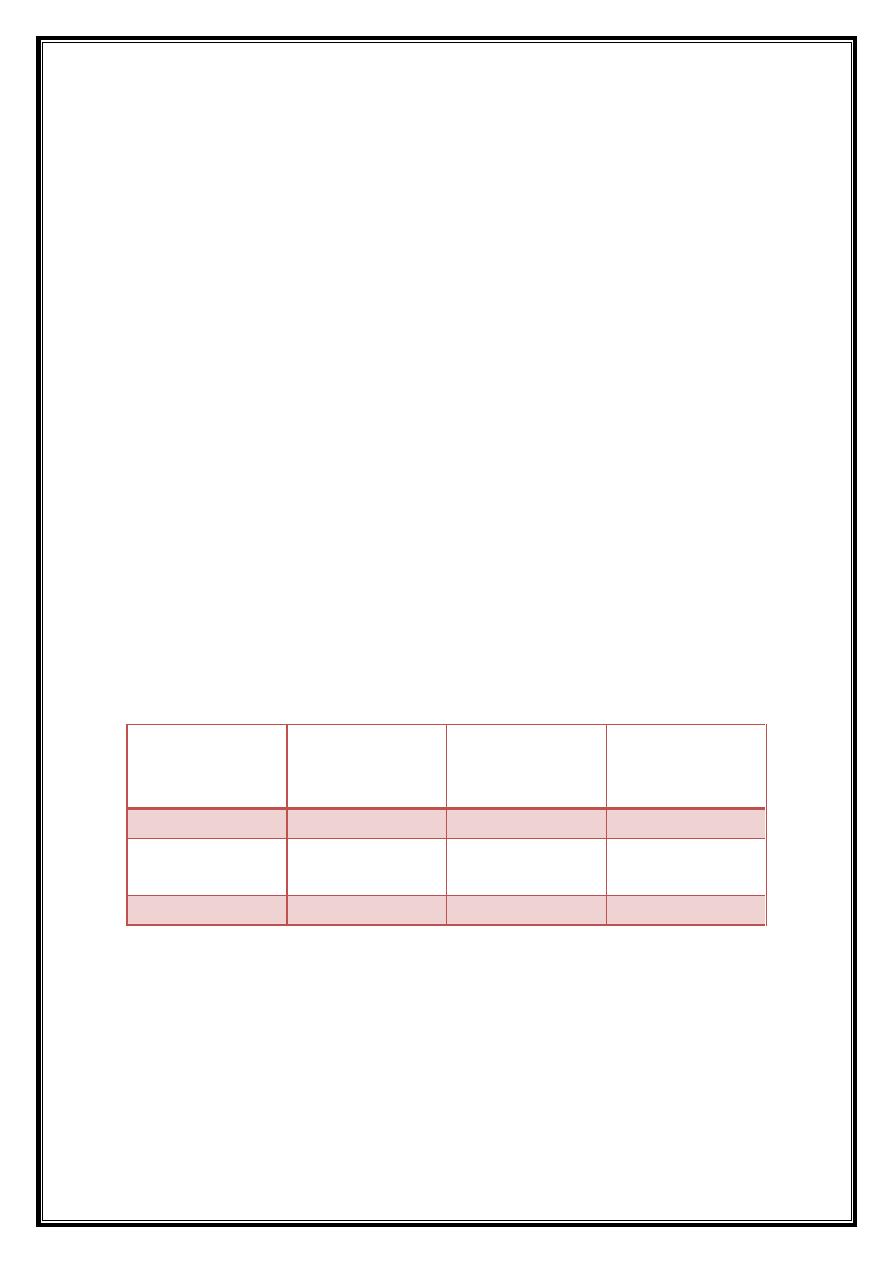
1
Thyroid gland
Thyroid gland
The thyroid gland consists of an isthmus and 2 lateral lobes, lies in front
of the neck. It synthesize and secrete, under TSH control, two thyroid
Hs:-
- T4: Throxine. 3,5,3’,5’ tetra- iodthyronine .
- T3: Tri-iodothyronin. 3,5,3’ – iodothyronine .
These hormones are synthesized and stored as thyroglobulin with the
colloidal area.
Thyroid Hs synthesis
TSH stimulates the thyroid follicle to trap circulating iodide (I - ) and to
oxidize it to iodine ( I+) by peroxidase enzyme.
Then, iodination of tyrosine occurs, where iodine reacts with tyrosyl
residues within the thyroglobulin.
The 3d position of the aromatic ring is firstly iodinated and then the 5
position to form MIT(monoiodotyrosine) and DIT ( diiodotyrosine).
Then, there is coupling of 2 DIT molecules occur to form T4, and one
MIT and DIT to form T3 .
One–half to two-third of T4 and T3 in the body is extrathyroidal, and
most of it circulate in bound form, bound to 2 specific binding proteins:-
Thyroxine- binding globulin ( TBG) Thyroxine- binding prealbumin (
TBPA)
Normally, TBG bind to nearly all of T4 and T3 in plasma.
The small unbound ( free) fraction is responsible for the biological
activity.
Extra thyroidal deiodination converts T4 into T3 About 80% of
circulating T4 is converted into T3.
T3 is metabolically more active and act rapidly than T4 since T3 bind to
the thyroid receptors in the target cells with 10 times affinity compared to
T4.

2
Effects of thyroid hormones
1. They regulate gene expression and tissue differentiation.
2. They are important for general development.
3.They increase the rate of metabolism of most body tissues, increasing
oxygen consumption.
4. They enhances the function of Na+ - K+- ATPase pump.
5. They enhances general protein synthesis and causes positive nitrogen
balance.
Thyroid Function Tests:
TSH measurement:-
Is the most sensitive test of between
hyperthyroidism, hypothyroidism and euthyroidism.
Free T4, free T3 tests:-
These measure the unbound active hormone.
TRH test:-
To investigate the hypothalamic- pituitary dysfunction.
Pathophysiology
Goiter is referred to any enlargement of the thyroid gland

3
Hyperthyroidism :-
Excessive production of thyroid Hs
( thyrotoxicosis), a condition of physiological and biochemical
disturbances results from exposure of body tissues to excessive quantities
of thyroid Hs.
It is usually primary, and most commonly due to Graves’ disease, and
rarely may be secondary ( due to excessive TSH secretion)
Findings are multisystemic and include rapid heart rate, nervousness,
inability to sleep, weight loss in spite of increased appetite,
weakness,excessive sweating, sensitivity to heat, and red and moist skin.
Hypothyroidism:-
Deficient production of thyroid Hs.
It is usually primary, and most commonly due to autoimmune thyroid
failure, and rarely may be secondary ( due to defective TSH secretion).
Characteristics of thyroid function tests
in common thyroid disorders
Condition
TSH
( 0.3-3.5 mol/L)
Free T4
( 10- 25 Pmol/L)
Free T3
(3.5-7.5 Pmol/L)
Thyroxicosis
Suppressed
Increased
Increased
Primary
hypothyroidism
Increased
Low/low normal
Normal or low
T3 toxicosis
Suppressed
normal
Increased

4
Hormones that regulate calcium metabolism:-
A-Parathyroid hormone(PTH):-
It is secreted by parathyroid gland, increases the circulating level of
free ionized calcium and is the most important controlling factor. PTH is
a single chain polypeptide containing 84 residues.
- Regulation of secretion: -
PTH secretion is inversely related to the
concentration of ionized calcium. Low blood ionized calcium stimulates
PTH secretion and vice-versa.
- Function of PTH:-
1) Maintenance of plasma calcium level within normal level by:-
a. Formation of calcitriol essential for intestinal calcium absorption.
b. Mobilization of calcium (Ca
++
) from bones.
c. Reduction of renal calcium excretion
2) PTH increases the urinary excretion of phosphate.
B-Calcitonin (CT):-
Calcitonin is a 32 amino acid peptide secreted by the parafollicular C-
cells of the human thyroid gland (less commonly the parathyroid or
thymus).
It lowers the circulating calcium and phosphate levels however, its role
in human physiology is still uncertain.
Therapeutically used in:
1.Treatment of hypercalcaemia ( especially that associated with
malignancy)
2. Treatment of osteoporosis.
